A Complete Guide to AI Social Media Analysis [2025]
Table of contents
People spend an average of 139 minutes daily on social media. The number is huge, and so is the marketing opportunity there. So, let’s talk about social media analysis! I know some of you might shrug your shoulders when they hear the word “social media analysis,” but it’s an essential part of your marketing strategy. Do you want to increase your ROI, reach new audiences, and promote your brand? Well, social media analysis is your go-to!
Quick Summary:
– Social media analysis is key for enhancing your marketing efforts and engaging more effectively with your audience.
– It involves collecting and analyzing metrics like reach, mentions, engagement, and more.
– By analyzing this data, you can optimize your content, track competitors, and tailor your strategies to better meet audience needs.
What is social media analysis?
Social media analysis is the process of collecting the most valuable data from your social media channels and drawing actionable conclusions.
To get the most out of a social media campaign, you need to analyse the data you gathered during your previous social media activities.
Analyze your social media!
Social media analysis is based on the data you already have from:
- your previous social media posts
- interactions with your followers
- earlier social media campaigns
- and so on!
But the question is…
How to find social media data?
Well, you basically have two sources of information.
1. Internal app analytics
To be fair, I have to admit that social media analysis can be a time-consuming process…
This approach means you need to go through each social media metric on your own and then conduct the social media analysis.
🟢 Pros of using internal app analytics:
- It’s free.
- It doesn’t require any analytical knowledge.
🔴 Cons of using internal app analytics:
- It’s limited to basic metrics and usually analyzes followers only.
- It lacks sentiment analysis.
- You need to analyze social media accounts separately.
2. Advanced social media analytics tools
The second approach is much more effortless. Most of the social media analytics tools present you with a ready-to-use analysis of your key performance indicators.
Plus, some tools have advanced AI-based features, which are a total game-changer!
For example, Brand24 offers an AI Brand Assistant.
It combines ChatGPT’s knowledge with your social listening project data to answer your queries.
This can help you understand your performance and reach your social media audience better.
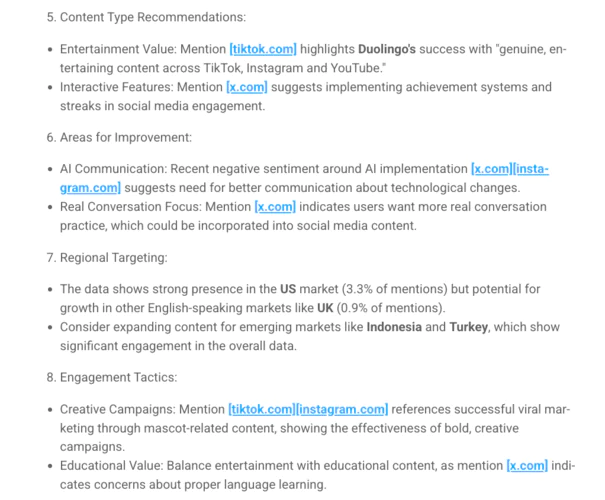
With AI, you can identify emerging trends and make smarter marketing decisions.
🟢 Pros of using advanced social media analytics tools:
- It saves lots of time – you get ready to use reports and visuals.
- It can monitor your metrics in real-time and alert you when something happens.
- It gathers data from multiple platforms in one place.
- It can create highly customizable reports for you.
🔴 Cons of using advanced social media analytics tools:
- You usually need to pay for it.
- Some people may need extra time to learn a new tool.
Why is social media analysis important?
Basically, it helps you understand what really works in your social media channels and helps improve your social media efforts and campaigns in the future.
Why does social media analysis matter?
- Social media analytics helps you see what’s working (and what isn’t) in real time.
- You can check the performance of specific posts, campaigns, and formats (e.g., video vs. image) in real-time.
- You can understand your target audience better and tailor your content strategy.
- Find the best time to post on social media channels.
- You can catch negative stuff early and fix it before it snowballs and ruins your social media marketing.
- It enables doing competitive analysis, seeing what competitors are up to, and what people love/hate about them.
- It helps you find influencers who actually move the needle and reach your target audience, not just the ones with big follower counts.
Monitor your social media presence!
And it gives you way more confidence when making decisions about your social media strategy.
Because it’s based on actual data, not gut feelings.
I know social media can feel like a black hole sometimes (trust me, I get it), but the insights you can pull from it are super valuable.
So, let’s move on to the next point…
How to start social media analysis?
All social media channels have different places to look for analytics.
But no worries – they’re easy to find.
To make it extra simple, I curated the list below, explaining where you can find your social media analytics on each platform (step by step):
1. TikTok
To find your social media analytics inside TikTok, you need to go to your profile > click the menu in the top right corner > go to “TikTok Studio”.
What will you find there?
- Followers analytics
- Performance analysis of your latest posts
- Impressions
- Traffic source
- Audience demographics
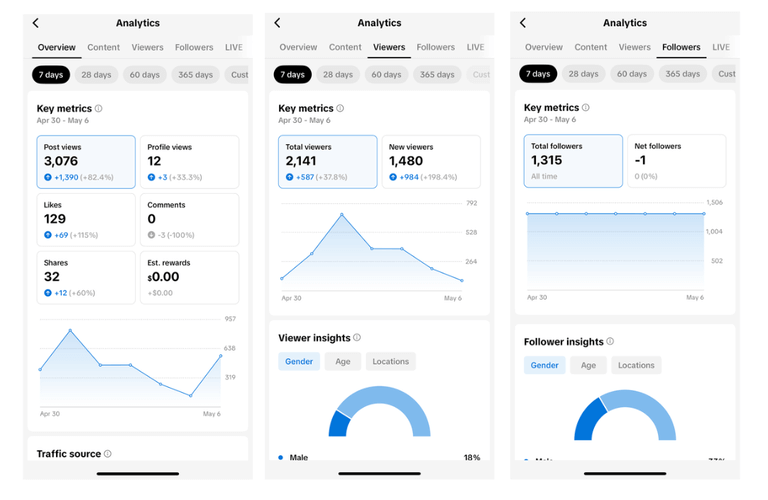
2. Instagram
To find your social media data inside Instagram, you need to go to your profile > “Insights”.
What will you find there?
- Followers demographics
- Impressions and how the performance changes over time
- Most active hours of your followers
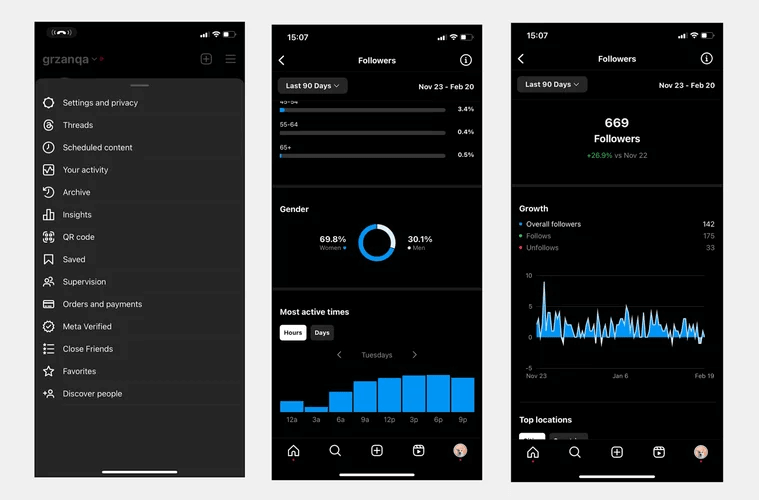
3. X (Twitter)
Unfortunately, you don’t get any social media analytics without a paid plan, so if you want to analyse your social media performance on this platform, you either have to pay or do it manually.
When manually analysing your profile, you can check:
- Your follower count
- The number of impressions
- The number of shares of your posts
4. Facebook
To find your social media data from Facebook, you need to go to the Meta Business Suite > “Insights”.
What will you find there?
- Views
- Reach
- Interactions
- Audience demographics
- Content performance
It also has a nice social media reporting feature – you can simply export the data.
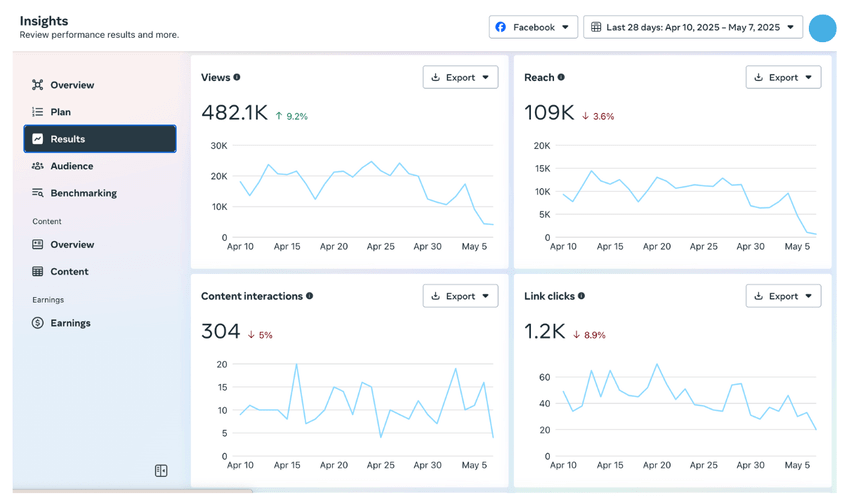
5. YouTube
When it comes to YouTube, you can find social media data in the YouTube Studio dashboard.
What will you find there?
- Audience demographics
- Geographic distribution of your viewers
- Video analysis
- Traffic source
- Clicks
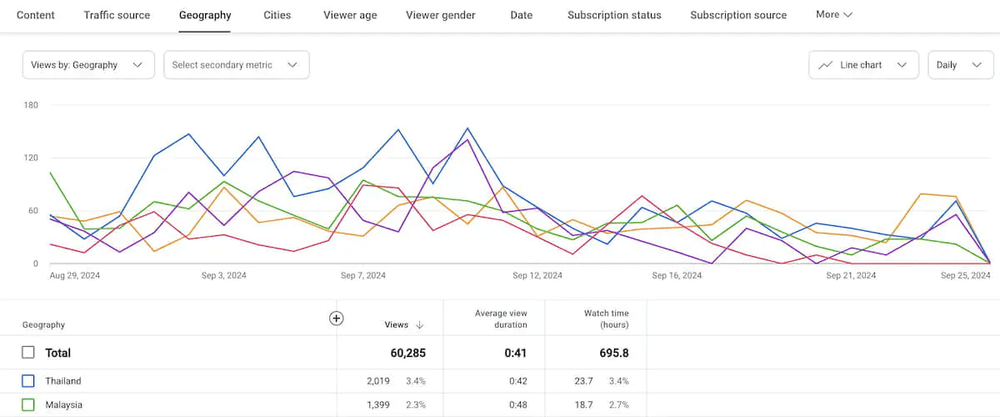
6. Twitch
To find social media analytics in the Twitch panel, you need to go to the “Analytics“.
What will you find there?
- Audience analysis
- Viewers metrics
- Chatters metrics
- Performance analysis over time
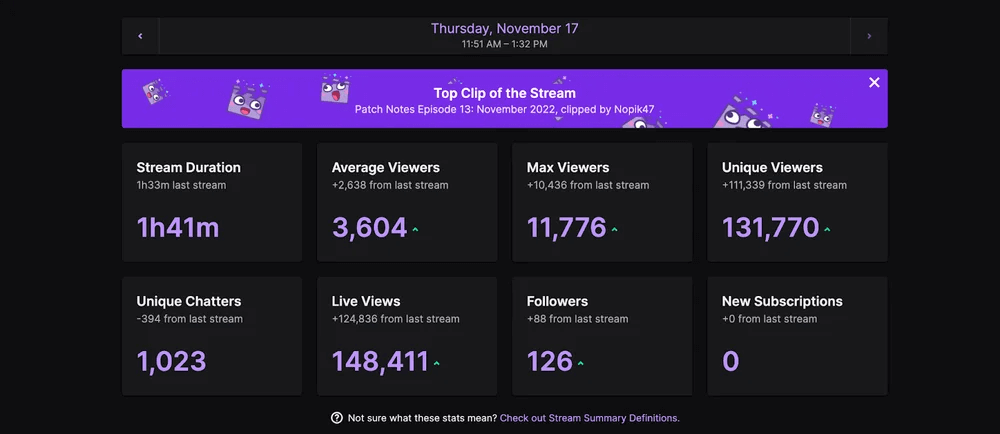
How to perform social media analysis? My tip: Use AI!
As you can see, there is a ton of information to gather and analyse when it comes to social media analysis.
And it’s impossible to collect and analyze this data by yourself. Especially if you run multiple platforms or social media channels.
So, here’s my tip: Use AI tools for that!
For example, Brand24, an AI social listening tool, collects publicly available mentions from all major social media sites, including:
- YouTube
- TikTok
- Twitch
- Bluesky
Then, it analyses it for you and even offers customizable reports.
Take a look, here’s a social media analytics report I created for Duolingo:
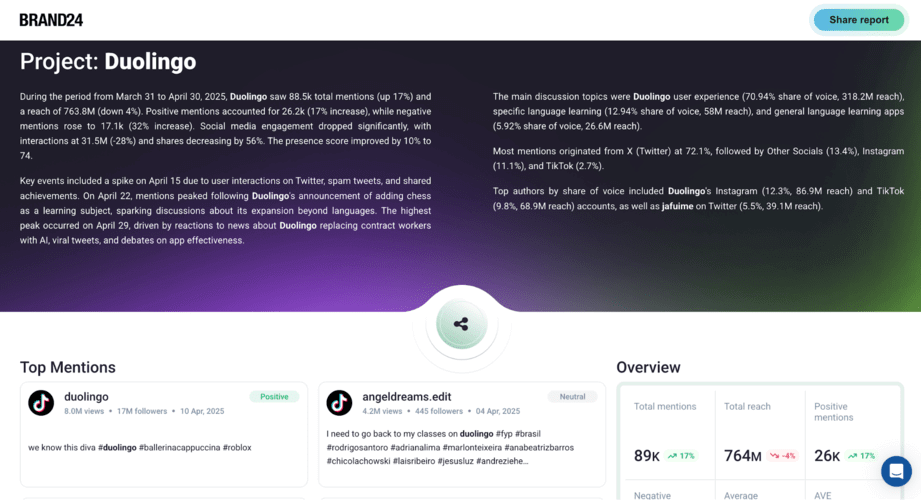
I love this feature – it makes social media reporting much easier. It highlights key social media performance data in a simple way.
You can take a look at:
- The reach you generated over the chosen period of time
- The number of mentions you got
- The sentiment analysis
- And more!
Plus, I can easily create reports for different platforms or put all social media in one.
And the best part – I can share the report with anyone interested (my manager, the agency’s client, etc).
Try AI for social media analytics!
Which social media metrics should you follow?
The truth is – it depends.
Choosing which social media metrics are important for your social media analysis depends on the goal you want to achieve with your social media strategy.
A good analysis provides actionable social media insights.
Remember: focusing on vanity metrics won’t bring you far when it comes to your social media strategy.
That being said, which social media metrics are key for your social media analysis?
Generally, the key social media metrics include:
- Engagement metrics: likes, shares, comments
- Follower count
- The volume of mentions
- Social media reach
- Engagement rate
- Audience demographics
- Hashtag usage
- Click-through rate
- Social media sentiment analysis
- The share of voice
If you look for a more detailed description of those metrics, check this article: Key Social Media Metrics to Track.
It explains each metric and shows how you can measure it.
What are the benefits of social media analysis?
Simply put: information is power.
The more actionable insights you can collect, the better campaign and general social media presence you’ll be able to develop.
Therefore, social media analysis should be an incremental part of your marketing planning.
What exactly are the benefits of social media analysis?
- Helps measure the social media ROI
If the results of your social media analysis aren’t satisfactory, you should implement changes to your marketing tactics.
An exhaustive social media analysis of your marketing activities is not a mumbo jumbo but solid data you could base actionable actions upon.
- Improve your social media strategy
Another benefit of social media analysis is the ability to create better content. And by better content, I mean content that is attractive and engaging to your audience. Content that will bring you new leads.
- Understand your audience
By performing social media analysis, you will know who interacts with your content.
You will be able to prepare content that engages your audience. That will not only look good on your social media analysis graphs but will also have a positive effect on your social media goals.
- Benchmark against your competitors
Being one step ahead of your competitors isn’t always easy.
One of the vital steps in becoming an industry leader is knowing what your rivals are up to.
Social media competitors’ analysis highlights any differences between you and your main competitors. The competitor analysis pinpoints both your advantages and disadvantages.
You can leverage your position by emphasizing your strengths and trying to exploit your rivals’ weaknesses.
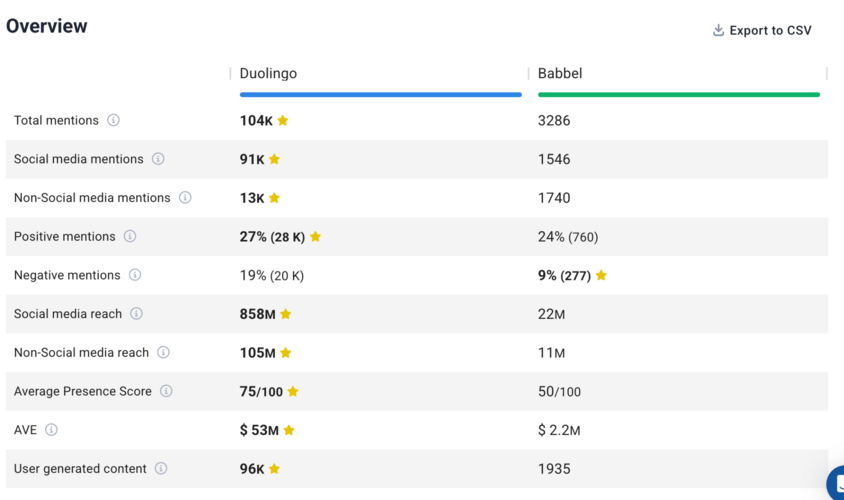
- Establish the direction in which your industry is headed
Social media monitoring will not only provide insights into the current state of your social media platforms but could also pinpoint the direction in which your industry is headed.
How can you do that?
By analysing the general talk around your business niche, monitoring what your customers need, and what improvements they would add to your product or service.

The customers shape your industry.
If your product doesn’t meet their needs and values, they will look for an alternative.
For a deeper look at how understanding emotions and opinions enhances these insights, you can explore the benefits of sentiment analysis as part of effective social listening.
Do social media apps have advanced analytics?
Yes, most social media platforms give you access to a lot of helpful social media data.
Apps like Instagram, Facebook, TikTok, and YouTube show you things like:
- How many people saw your posts
- How they interacted with them
- Who your followers are
- & When they’re most active.
Which is a great starting point!
Especially if you want to understand what’s working and what needs improvement and don’t run various social media accounts.
But here’s the thing…
These built-in tools only go so far. They focus on your own account and, sadly, don’t always tell the full story.
So, if you:
- Want deeper insights
- Are managing multiple accounts
- Are working with a team
- Are reporting to clients
AI-based social media analytics tools can be a game-changer for your social media analytics!
Get ready-to-use insights about your performance!
How?
AI social media analytics tools go beyond the basics.
For example, Brand24 offers:
- Insights about people who don’t follow you.
- AI reports with all social media analytics in one place.
- Sentiment analysis – Are people talking about your brand in a positive or negative way?
- Share of voice – How often are you mentioned compared to your competitors?
- Competitor comparisons – What are others in your industry doing better (or worse)?
- Event detectors – Spot sudden spikes in mentions or engagement and find out what caused them.
The best part? These tools pull all your data into one dashboard, so you don’t have to jump between multiple social media channels.
That saves time and gives you a clear view of your entire online presence.
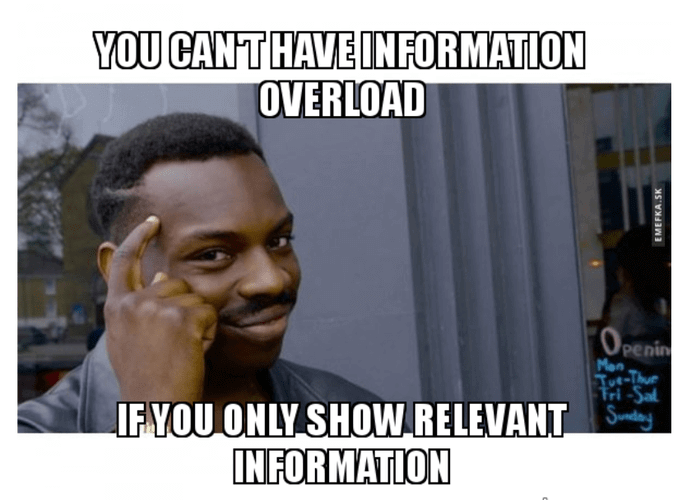
Other most often mentioned social media analytics tools are:
- Google Analytics (great for ad analytics).
- Sprout Social (also known as a social media management software).
If you want to learn more about the best social media analytics tools, go to this article: The Best Social Media Tools for Marketing.
How to use social media analytics to boost your profile?
Social media marketing is a LOT. All the data, all those trends… and it changes so quickly.
I get that you might not be so sure what to actually do with all that social media data.
Don’t worry!
Here’s a list of my quick tips to help you turn numbers into real results in your marketing campaigns :
- Find your best content
Look at which posts got the most likes, shares, or comments. Do more of what works!
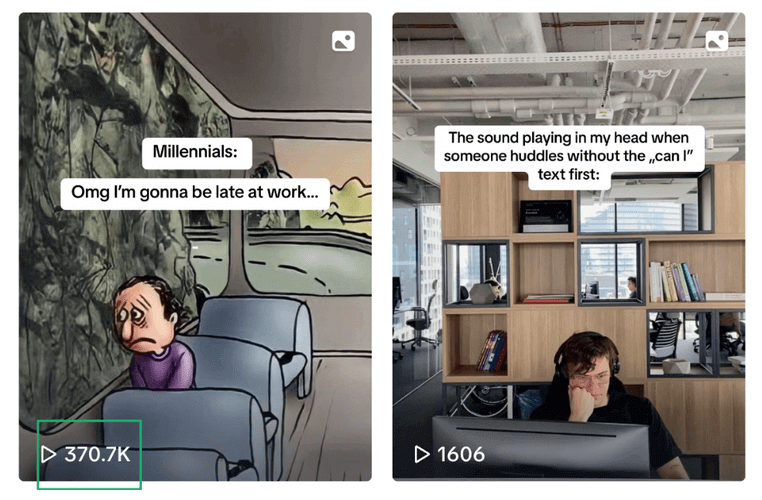
- Post at the right time
Check when your audience is most active. Posting then gives your content a better chance of being seen. - Understand your audience
Use analytics to see who’s following you – age, gender, location, interests. Tailor your content to match what they care about.
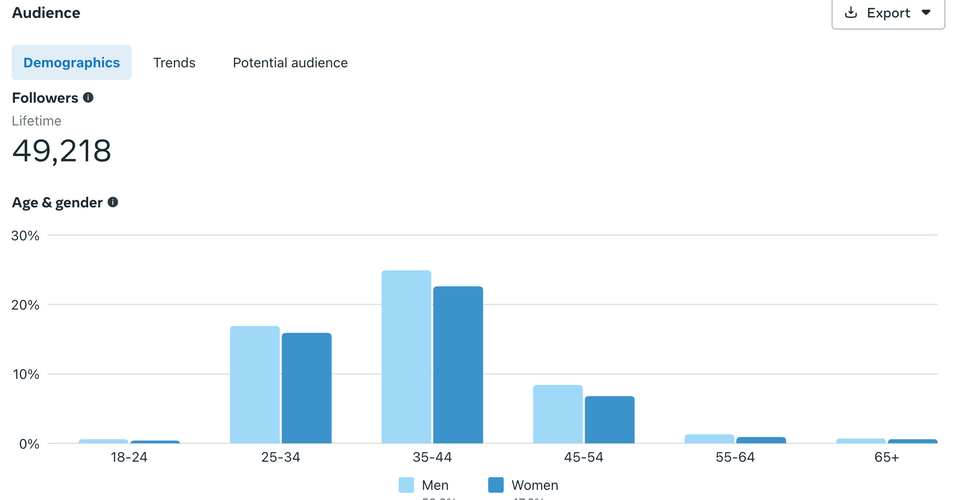
- Spot what’s not working
Low engagement? High drop-off rates? Something’s not clicking, and you can use the data to improve it. - Track your growth
Keep an eye on your follower count, reach, and engagement over time. Make sure to act when something unusual happens.
AI Events by Brand24 is a very helpful feature there. It identifies the reasons behind significant spikes or drops. Just like it recently did for Duolingo:
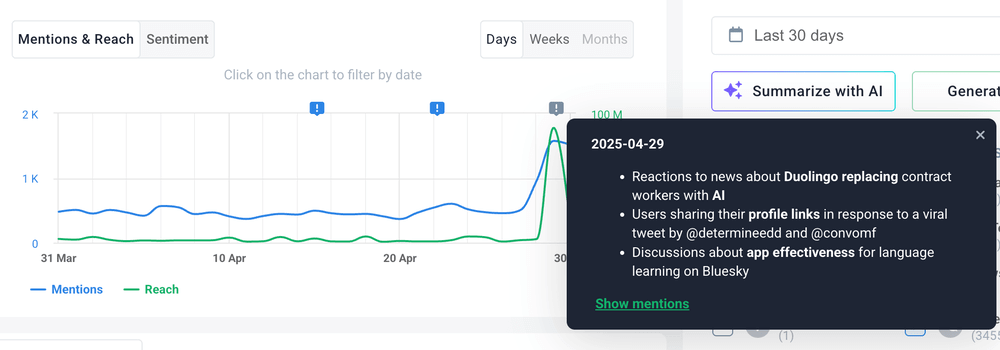
- See what your competitors are doing
Use advanced tools to check what kind of content your competitors post and what works for them. Use it as inspiration or find ways to stand out. - Catch problems early
If people start talking negatively about your brand, sentiment monitoring can help you spot it immediately and respond before it gets worse. - Work smarter, not harder
Instead of guessing, let the data guide your decisions. You’ll save time, improve results, and get better at reaching the right people.
And remember: social media analytics aren’t just for reporting and forgetting!
They’re one of the easiest ways to grow your online presence and make your marketing smarter.
Start monitoring your social media!
Conclusion
Let’s wrap it up.
Social media analytics today is more advanced than ever. It’s not just simple data points like likes and views.
Today, you have access to really smart tools that track sentiment or compare you with competitors with just a few clicks.
A lot of useful info at your fingertips!
Final thoughts:
- Social media analytics help grow faster and avoid costly mistakes. You can spot problems early, test ideas quickly, and stay ahead of changes in trends or algorithms.
- Tools like Brand24 are a great way to take your analysis to the next level – AI Reports, sentiment analysis, competitor analysis, and all of it in real time!
- Social media analytics is not about tracking everything, but making smart choices. Make sure to use the analysis you conduct and not put it in another folder, and never look at it again.
In short, social media analytics helps you build with purpose.
Want to check what difference it can make for you? Start with the Brand24 trial and watch your social media grow!




